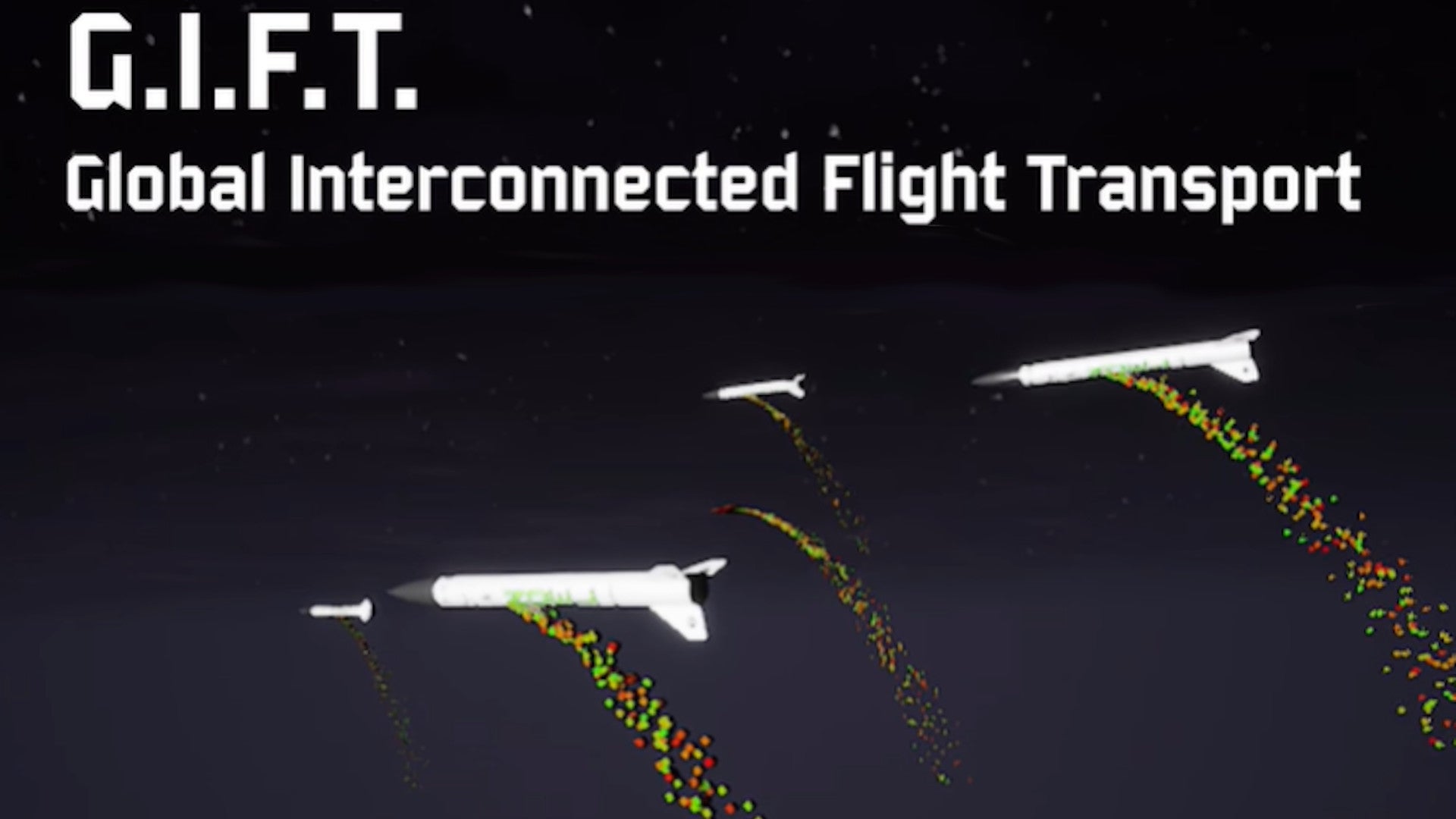Ahead of Christmas this year, the Air Force Research Laboratory has put out a lighthearted computer-generated video of a system it has “developed” to help Santa deliver gifts to children around the world. While clearly meant to help people get into the holiday spirit, just like with the “reveal” of a similarly fictional Hypersleigh two years ago, the fictitious Global Interconnected Flight Transport, or GIFT, isn’t that far off from very real concepts that the U.S. Air Force and U.S. Space Force are exploring now, chiefly the Rocket Cargo program.
Rocket Cargo, which The War Zone
was first to report on, is a novel logistics concept that envisions being able to deliver up to 100 tons of cargo and potentially personnel anywhere in the world within one hour.
The Air Force Research Laboratory (AFRL) posted the GIFT video on social media yesterday. “After weeks of research, collaboration and test launches the day has finally arrived…to showcase the North Pole’s new G.I.F.T. system!” reads an official Tweet.
GIFT is depicted as a ground-launched rocket with the word “NOEL” written on its body along with the Air Force and Space force logos, among others. The video then goes on to show a group of them releasing their payloads of presents.
The Hypersleigh, which has a delta-wing planform reminiscent of real manned and unmanned hypersonic flight vehicle concepts, but with the addition of sleigh-like landing skids and a Christmas-themed paint job, also makes an appearance. A reference is also made to AFRL’s Roving Organizational Surveillance Assistant (ROSA), the lab’s play on the popular Elf on the Shelf, who the lab has previously said was involved in “testing” of the Hypersleigh.
GIFT is, of course, obviously not a serious thing. Neither is the present-laden Hypersleigh.
At the same time, the Hypersleigh reflected a very real interest on the part of the Air Force in 2019 in potentially reusable manned and unmanned hypersonic aircraft that could meet a variety of different operational requirements. The service is still actively pursuing those kinds of capabilities. Just this week, The War Zone
reported on the latest details to emerge about the Air Force’s secretive Mayhem project. Everything we’ve learned so far about Mayhem, which AFRL is managing, points to a project to craft demonstrators to support the development of hypersonic aircraft capable of carrying out strike and intelligence, surveillance, and reconnaissance missions.
As silly as the GIFT idea of rockets raining presents down from space might seem, it also represents a very real area of study that AFRL, in cooperation with the Space Force and U.S. Transportation Command (TRANSCOM), is looking into right now through Rocket Cargo. The basic idea would be to develop a rocket-based logistics system of some kind to enable the rapid transport of payloads up to 100 tons, a core requirement based on the maximum cargo load of a C-17A Globemaster III transport aircraft, to any location globally in 60 minutes or less. How all of this would be done, and done in a cost-effective and otherwise practical manner, very much remains to be seen, as The War Zone
has explored in-depth in the past.

Regardless, there is a clear commitment to this project, at least in the near term. Earlier this year, the Department of the Air Force, of which Space Force is a part, declared that this program was the fourth of its so-called “Vanguard” initiatives. It created this label to highlight high-priority projects. The other three Vanguards are the Skyborg program, which is developing an artificial intelligence-driven “computer brain” and associated systems that will be able to operate semi-autonomous “loyal wingman” type drones and potentially fully-autonomous unmanned combat air vehicles (UCAV), as well as the Golden Horde networked munitions project and the Navigation Technology Satellite 3 (NTS-3) advanced space-based navigation system effort.
Private industry has shown interest in being involved in this effort, as well. In October 2020, before the Rocket Cargo program or Space Force had formally come into existence, TRANSCOM had signed Cooperative Research and Development Agreements (CRADA) with space launch company SpaceX and space consulting firm XArc to help kickstart work on similar logistics concepts. This October, Blue Origin, another space launch company, revealed that it was in talks with TRANSCOM about its own potential CRADA. Relevant Air Force contracting documents have said that the Rocket Cargo plan, at least right now, is “solely focused on leveraging commercial rocket capabilities as a leased service.”

So, while AFRL using GIFT to spread holiday cheer around the globe may not actually be a thing, it is very interested in whether or not it can turn the idea of sending other payloads to locations around the world in relatively short amounts of time into a reality.
Contact the author: joe@thedrive.com
